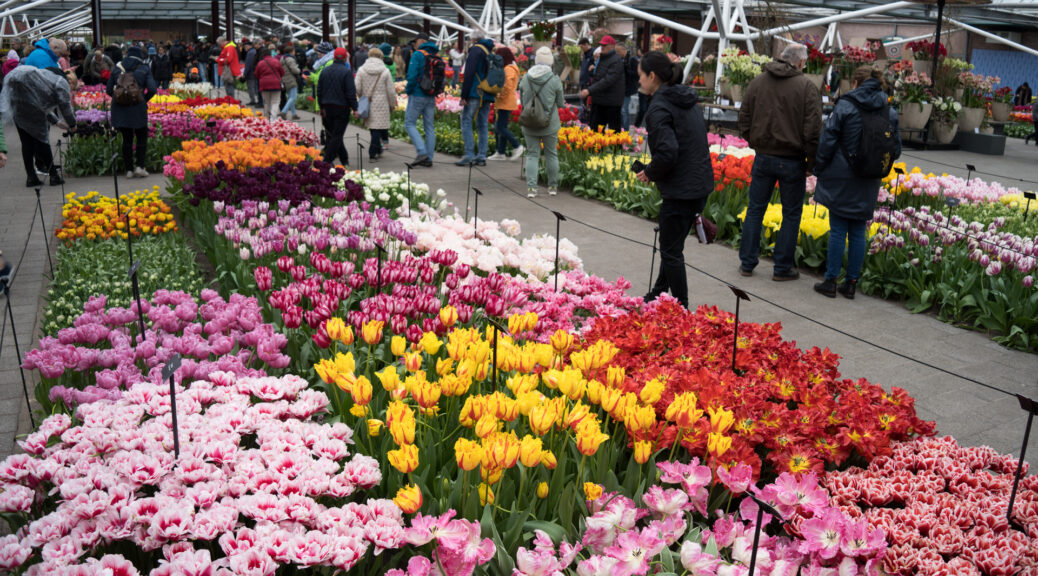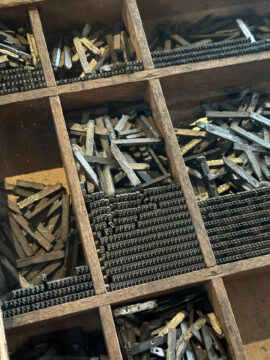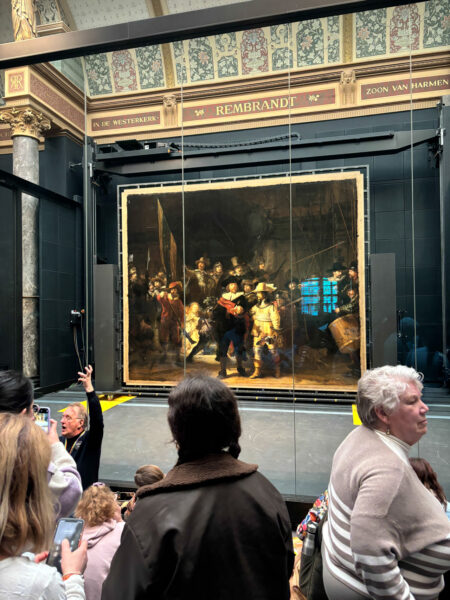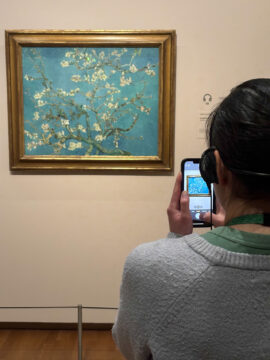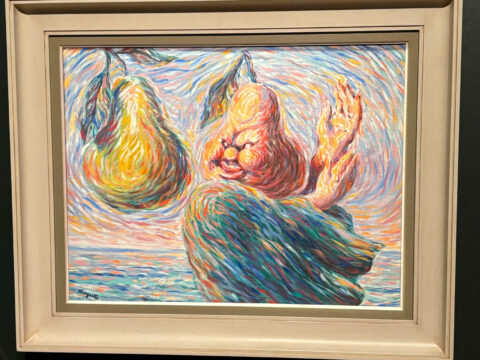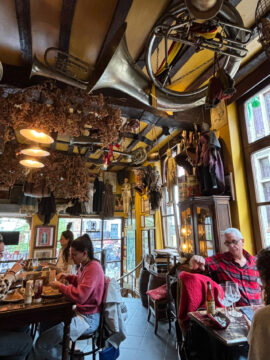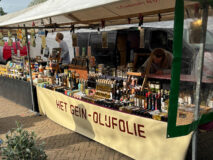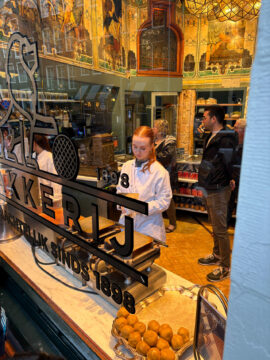This April, Katie and I enjoyed an eight-day urban vacation through Brussels, Ghent, and Antwerp in Belgium and Amsterdam in the Netherlands. This was unusual for us, a trip with essentially no wilderness excursions, but we still managed to squeeze in something like 28k steps each day. The trip focused on mostly museums, food and beer, and tulips.
Tulips
Keukenhof, “the most beautiful spring garden in the world.” We lucked out with peak tulips, hyacinths, and daffodils/narcissi, artfully planted in highly manicured beds. They have a single windmill for tourist enjoyment and several indoor spaces for displaying unusual varieties of blooms, artistic exhibits, and historic exhibits.
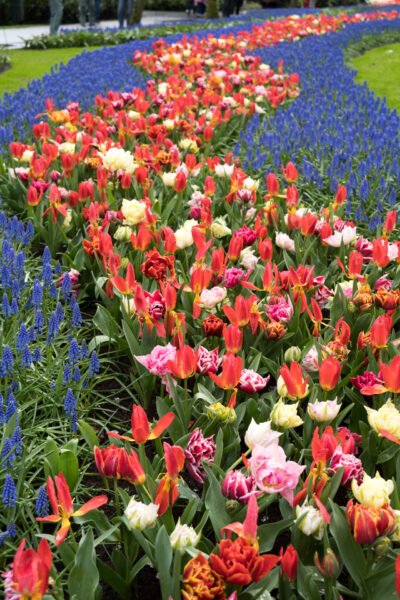
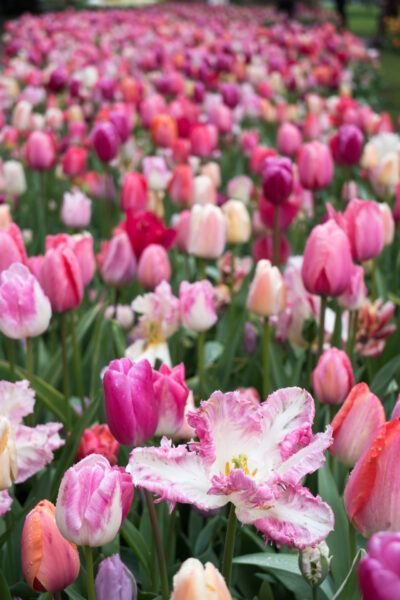
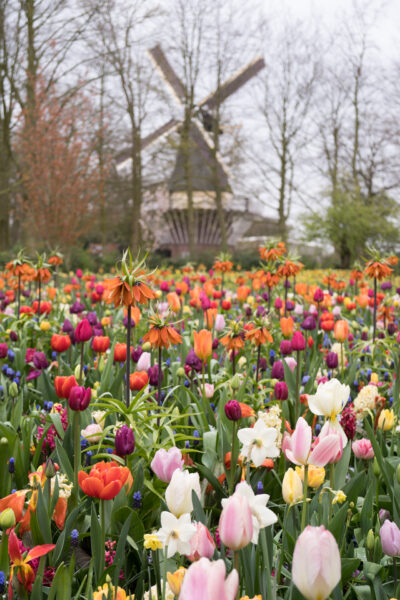
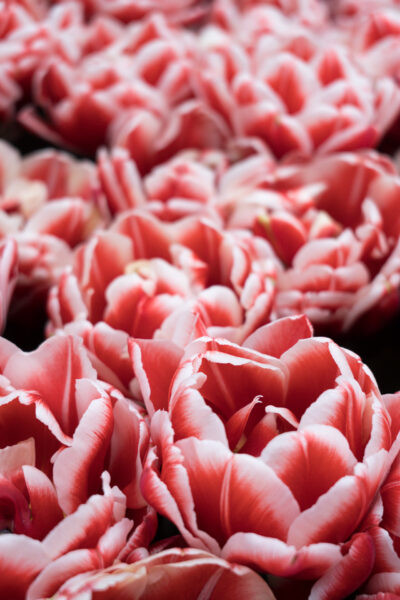
This was the one attraction where I actually took a meaningful number of photos with both my Sony mirrorless and newfangled iPhone 15. Katie can attest that I’ve lost my enthusiasm for photography, partly because my dinky Sony lenses don’t match up to my defunct collection of Canon L lenses. At least the iPhone two-sensor software-enhanced camera array is quite powerful, especially compared to my recently retired iPhone SE. It even has solid macro capabilities!
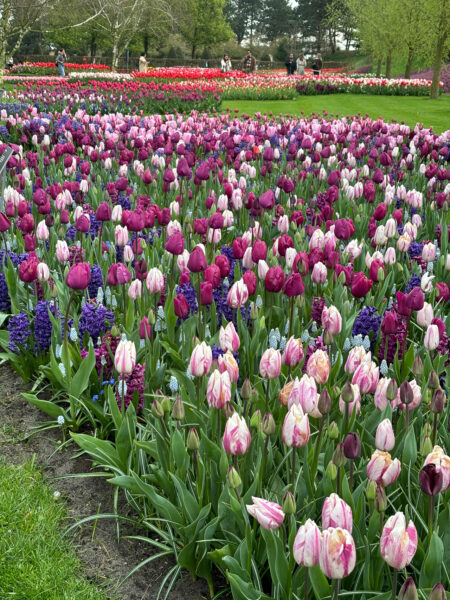
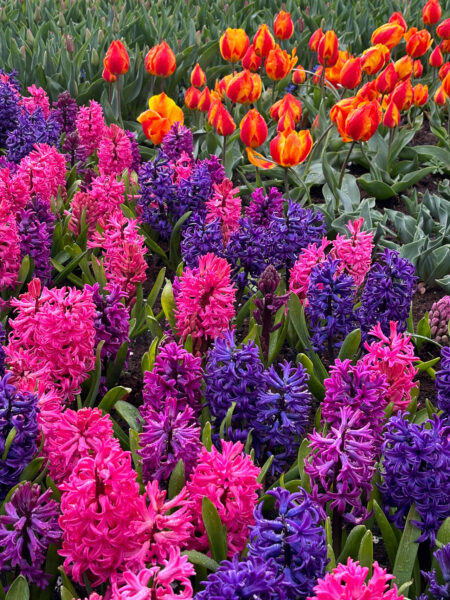
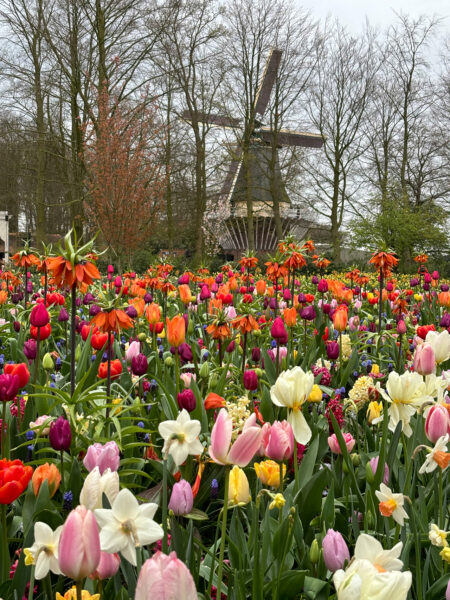
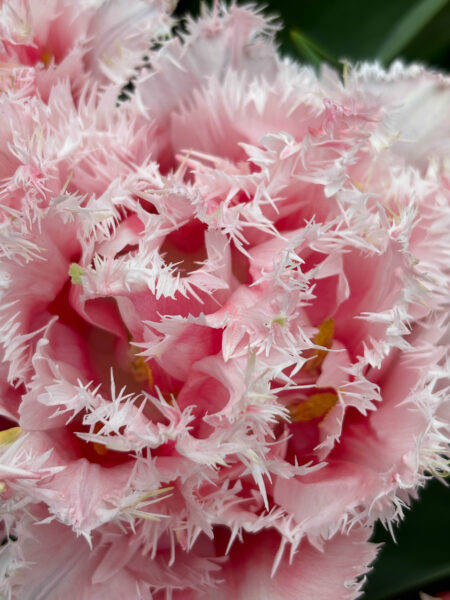
This trip and this post mark a significant change in my photography journey. I’m overhauling my backend file management, surrendering to an increasing reliance on phone photos, portrait rather than landscape orientation, and less post-processing.
A short drive from Amsterdam, Keukenhof is open late March through mid May and runs a bus lines both from a stadium south of city center and from the airport. The garden boat tours float around the periphery and bikes aren’t allowed inside, so a garden pass may suffice. Book in advance.
Museums
In order of my personal ranking:
Plantin-Moretus Museum, Antwerp – Housed in the estate of a prominent 16th-18th century printing family is a museum about the burgeoning printing industry. It exhibits two of the oldest working presses in the world, from the 1600s! They also had cases upon cases of actual movable type. Although not a totally refined museum experience, I’d highly recommend this to anyone interested in print and layout design.
Musical Instruments Museum, Brussels – Housed in a beautiful converted English department store, this museum features a vast collection of unusual historic instruments, ranging from creative old keyboards that plucked or bowed strings, to odd wind instruments from around the world, to modern electronic creations. The free audio tour let us hear recordings made from the instruments exhibited. We learned that the saxophone was invented by Adolph Sax, a Belgian musician from the 1800s.
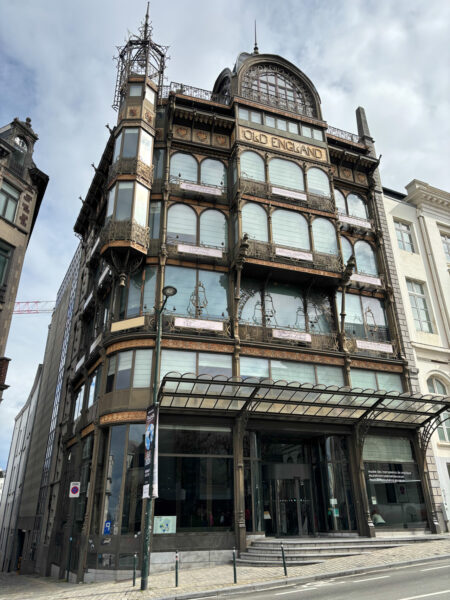
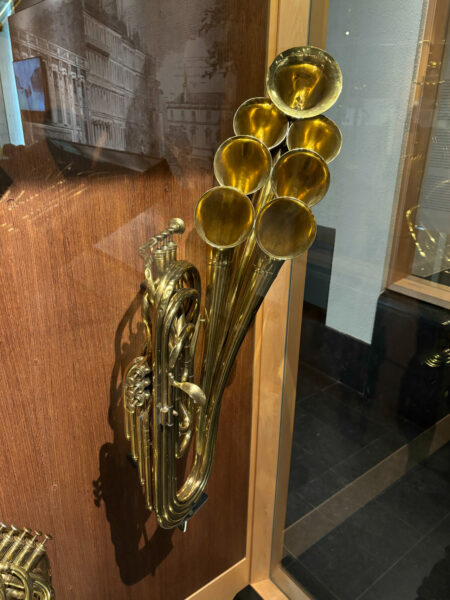
Rijksmuseum, Amsterdam – A fine arts museum of massive scale, not unlike the Met in NYC. Audio tours seemed popular all over, and here we downloaded an app to listen on our phones. Highlights were The Night Watch by Rembrandt, several works by Vermeer, and many other Dutch classics.
Van Gogh Museum, Amsterdam – Next door to Rijksmuseum is a whole museum dedicated to this one dude, founded by the efforts of his nephew Vincent and his widowed sister-in-law Jo. It’s almost propagandist how they present his brief artistic career, but wow what a collection.
KMSKA (Royal Museum of Fine Arts), Antwerp – A solid diverse art museum in a regal building.
Magritte Museum, Brussels – A temporary museum also dedicated to a single dude. What a funhouse of surrealism.
Gravensteen, Ghent – Speaking of audio tours, our tour of this moated castle in the little city of Ghent was driven by this utterly absurd audio tour by comedian Wouter Deprez, replete with tortured shrieks, poop jokes, and raunchy innuendos.
The Cathedral, Antwerp – A grand cathedral with magnificent art
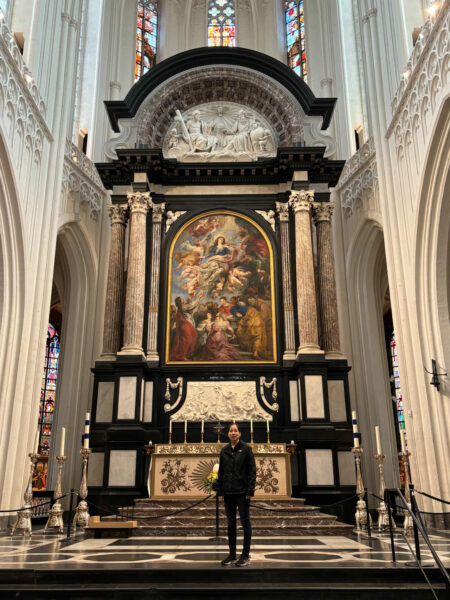
Notable omissions: Anne Frank Museum, Amsterdam, booked solid. MoCo, Amsterdam, since we prefer the old Dutch masters over modern art. MAS, Antwerp, modern art.
Cultural Tidbits
Going in, I didn’t realize how little I knew about Belgium. For instance, I’d known that the Flemish were historically important in printing. However, I didn’t realize that Flanders is literally now the Dutch-speaking, northern half of Belgium. Belgium is supremely multilingual, boasting the three official languages of Dutch, French, and German. Basically everyone you’d encounter as a tourist speaks English, though.
Manneken Pis, the famous peeing boy statue in Brussels, is tiny! He stands at less than 2 feet tall. He’s dressed up for special occasions in adorable outfits. Both Easter Sunday and Easter Monday were national holidays in Belgium, but he wasn’t dressed up for either.
Amsterdam reminded me of New York City. Sure, it has canals instead of skyscrapers, but it felt like a modern metropolis built on the bones of an old financial hub. It’s multicultural, multigenerational, dense, and energetic. There’s something for everyone to enjoy at almost any hour. There are endless barges of international tourists on canal booze cruises (we even saw a canal traffic jam!); there’s a plethora of world class museums; there’s Vondelpark, a gigantic rectangular urban park; there’s both Michelin starred dining and humble street food side by side; there are queues of locals and visitors trying to snag hyped sweets, only they’re stroopwafels and not cronuts. Then, I remember that NYC is New Amsterdam rechristened, and Katie and I live off Amsterdam Ave. haha.
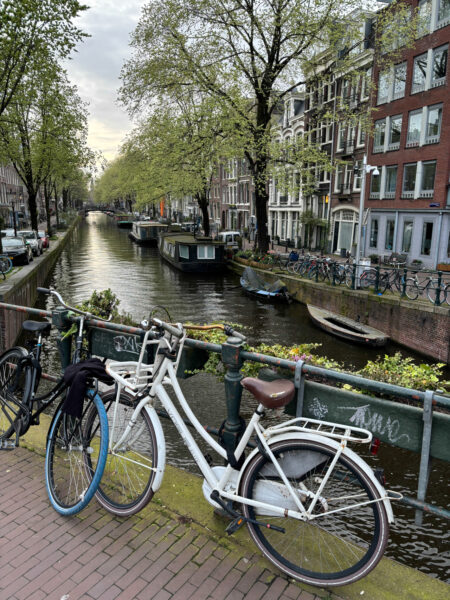
I loved how bicycle-centric Amsterdam was (as was Ghent, actually), but a detail in Amsterdam that poked incessantly at my eyes: a huge percentage of the bikes – I estimate >5% – had blue front tires. Only blue front tires; nary a blue rear tire nor other colored tires. Turns out, they’re all subscription bikes loaned by the company Swapfiets, where fiets means “bikes” in Dutch. What a successful advertising campaign. Nonetheless, for simplicity’s sake, we opted not to bike and just walked.
Besides Frisian, the Dutch language is the closest extant related to English. Even never having studied Dutch, I understood many written vocabulary words. They use the same glyphs and similar alphabet, so typing into Google Translate was easy. I like how “-en” is still their pluralizing suffix, whereas it only survives in English as rare ancient plurals like children, brethren, and oxen. A feature I enjoyed is their IJ digraph, pronounced like “ay”. Lots of signage had it typeset as a ligature. So that’s why Heineken Brouwerij is spelled such.
Beer
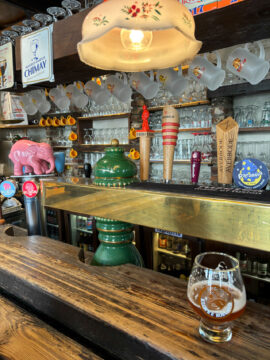
I still remember in 2010, at age 19, while I was doing summer research in Cambridge, UK, my German labmate bought me a beer and invited me to partake in our lab pub outing. I took a timid sip but found the fizzy bitterness unappealing, so he chugged the rest. Otherwise, I didn’t drink much in college or medical school (i.e. I dodged subpar alcohol experiences), but now I quite enjoy beer. Belgium takes its beer seriously – I honestly hardly saw wine, cocktails, or even water drunk – and this trip was the perfect chance to imbibe broadly.
I tried 19 different beers. This included the classic Lindemans Kriek, a “lambic” beer with a spontaneous fermentation method and flavored with sour cherries; Jupiler, an industrial pilsner; Ijwit, a wheat ale; and Omer, a traditional blond. Almost all the rest were strong ales (this trip, the average ABV was 7.6%), the majority being Belgian Tripels. My favorites were the legendary Trappist ales, brewed by monks. Rochefort was delightfully chocolatey, whereas La Trappe tasted like stewed plums. Katie sampled a small selection of non-alcoholic beers, too.
We visited the Delirium Cafe in Brussels, a bar complex which famously offers 2000+ beers. This was evermore impressive because every beer and brewery seemed to have its own proprietary glass, and the shapes differed wildly. You may recognize the Delirium/Huyghe Breuwerij pink elephant mascot and Delirium Tremens strong golden ale.
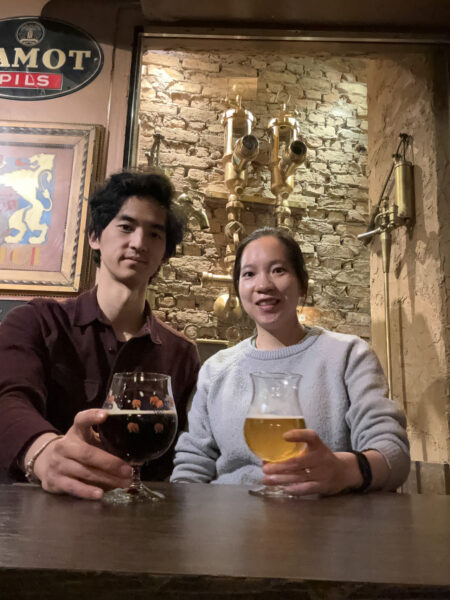
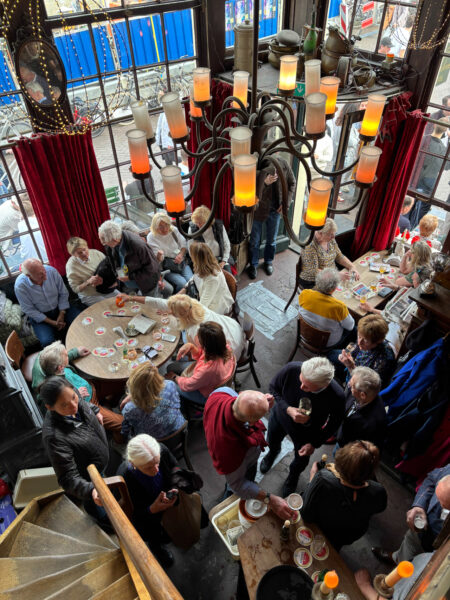
Cost-wise, I’m glad I had my fill of Belgian beers. Take for instance Delirium Tremens, a common specialty Belgian beer in the US. Here in New Haven a pint four-pack is $22, but a 50 cl (pint-ish) can at a Belgian supermarket is like half the price, €2.50. Even a draught pour at a bar is around €4.50. Alas, we pay for import taxes and alcohol tariffs.
To be fair to America, the craft beer scene here is wonderful, and each country excels as its respective styles. Both west coast IPAs and New England hazy IPAs stand out and are difficult to emulate; one Belgian microbrew I tried which borrowed Citra hops from Washington state lacked nuance and tasted comically of boozy grapefruit. I even prefer American interpretations of older European styles, say Blue Moon (New York, 1995) versus the original witbier Hoegaarden (Belgium, 1445).
Food
In Belgium, of course we had to have frites from dedicated fry shops with a variety of dips. Mussels, Liege-style wafels with chocolate sauce, Belgian chocolate confections, stoemp (mashed potatoes with root vegetables like carrots), Flemish beef stew always made with dark Belgian beer, and stuffed endives were other Belgian highlights. The single best dish we had was a guinea fowl risotto special at Bistro Ernest in Antwerp. We enjoyed plenty of supermarket skyr for breakfast.
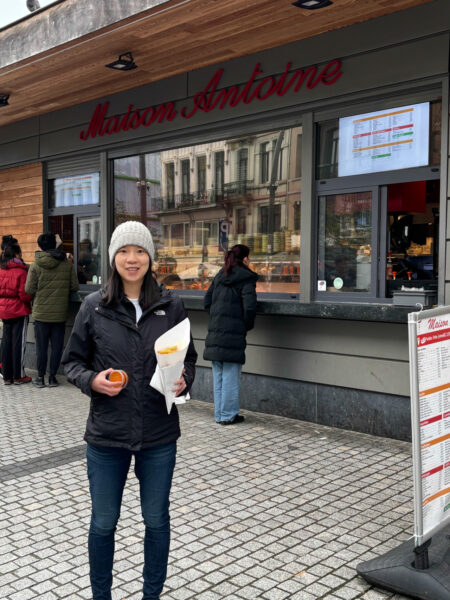
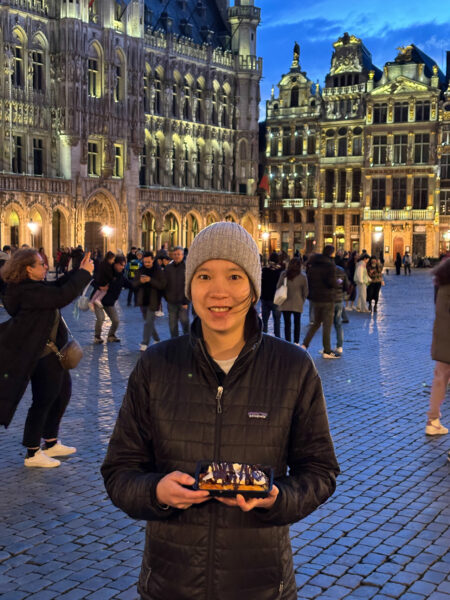
My favorite specialty dish was pickled herring, in Amsterdam. From little roadside fishmonger shacks you can buy a single herring in a pillowy white bread bun with diced onion and pickle chips. The fish is mild and fatty, like European sushi! From the same fishmongers Katie enjoyed kibbeling, fried cod bites. Bitterballen (beef croquettes), Dutch pancakes with strawberry and whipped cream, and – quite unexpectedly – traditional Indonesian cuisine were other standouts in Amsterdam.
Twice I had fresh stroopwafels, where the confectioner took a sizeable dough ball sweetened with stroop (a dark syrup traditionally made from fruit), pressed it quickly in a finely patterned rectangular waffle press, immediately sliced it open, slathered on a spoonful of liquid caramel, and handed the sandwich to me in a paper sleeve. The experience is quite unlike the pre-packaged supermarket wafels, particularly the pliable wafel texture and pool of sticky caramel in the crevices of sleeve.
Thrice, our early eating schedule let us slip into 12h00 or 17h15 seatings at otherwise booked solid restaurants. Lucky us.
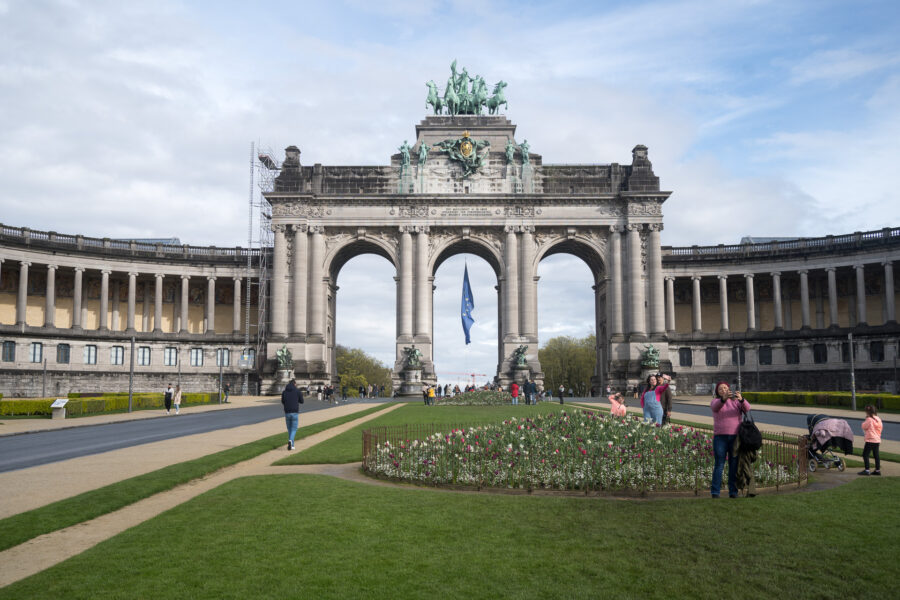
Itinerary
Here’s a summary, though honestly it was somewhat haphazard. We didn’t need two full days in Antwerp, for example. We didn’t closely investigate a multi-city flight itinerary.
- Friday: fly JFK-AMS, 7:50 pm-8 am flight, 7ish hours
- Day 1: Brussels. Land at 8:30. Take 2.5-hour InterCity train from AMS to Brussels. Wander Grand Place and city center, Magritte Museum, Delirium Cafe.
- Day 2: Brussels. Morning walk around cathedrals. Musical Instruments Museum, Manneken Pis, Parc du Cinquantenaire, frites, chocolate shopping.
- Day 3: Ghent. Take 40-min train. Walk around Ghent city center. Gravensteen. Train back to Brussels.
- Day 4: Antwerp. Take 40-min train from Brussels to Antwerp Centraal station. Plantain-Moretus Museum, KMKSA museum.
- Day 5: Antwerp. Run north past Het Steen. The cathedral, diamond district, and other shopping areas.
- Day 6: Amsterdam. Take 2.25-hour train. Albert Cuypstraat market, Rijksmuseum (reserve), Indonesian dinner, walk around canals.
- Day 7: Amsterdam. Keukenhof (reserve, via official bus from RAI), Van Gogh Museum (reserve), early dinner.
- Day 8: Amsterdam. Run Vondelpark. Walk downtown, eat pancakes, walk more canals, chill.
- Sunday, Day 9: fly AMS-JFK, 12:10-2:25 pm.
